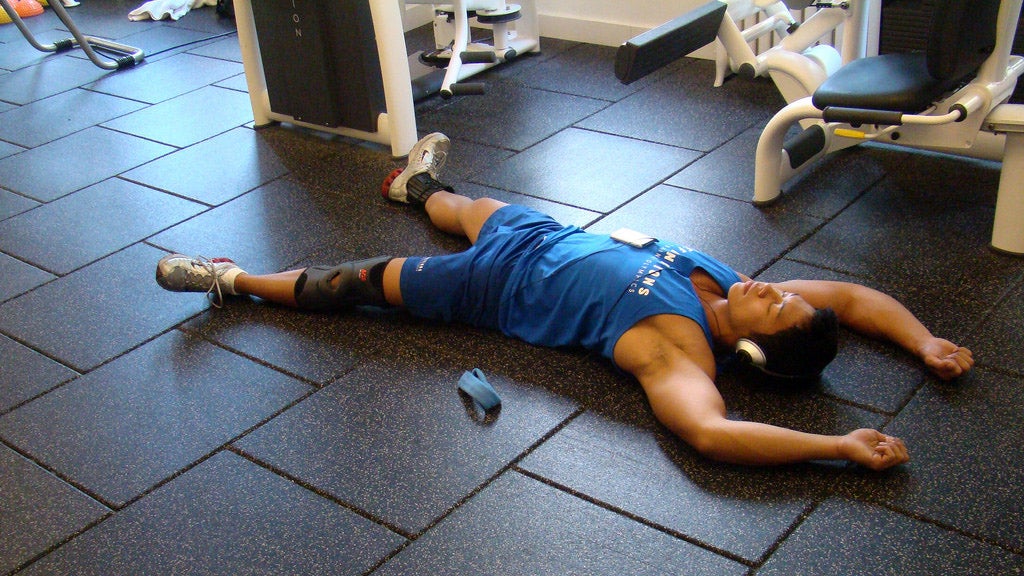

Mainwood GW, Lucier GE (1972) Fatigue and recovery in isolated frog satorius muscles: The effects of biocarbonate concentration and associated potassium loss. Mainwood GW, Cechetto D (1980) The effect of biocarbonate concentration on fatigue and recovery in isolated rat diaphragm muscle. Lind AR, Taylor SH, Humphreys PW, Kennelly BM, Donald KW (1964) The circulatory effects of sustained voluntary muscle contraction. Lind AR (1959) Muscle fatigue and recovery from fatigue induced by sustained contractions. Kearney JT (1973) Strength recovery following rhythmic or sustained exercise. Karlsson J, Saltin B (1970) Lactate, ATP, and CP in working muscles during exhaustive exercise in man. Karlsson J, Funderburk CF, Essen B, Lind AR (1975) Constituents of human muscle in isometric fatigue. Jones DA, Bigland-Ritchie B, Edwards RHT (1979) Excitation frequency and muscle fatigue: Mechanical responses during voluntary and stimulated contractions. Hultman EJ, Berstrom J, Anderson NM (1967) Breakdown and resynthesis of phosphorylcreatine and adenosine triphoshate in connection with muscular work in man. Hill AV (1938) The heat of shortening and the dynamic constants of muscle. Harris RC, Edwards RHT, Hultman E, Nordesjo L-O, Nylind B, Sahlin K (1976) The time course of phosphorylcreatine resynthesis during recovery of the quadriceps muscle in man.

J Physiol 58: 373–395įunderburk CF, Hipskind SG, Welton RC, Lind AR (1974) Development of and recovery from fatigue induced by static effort at various tensions. Plenum Press, New York, pp 357–360įenn WO (1924) The relation between work performed and the energy liberated in muscle contraction. In: Pernow B, Saltin B (eds) Muscle metabolism during exercise. J Physiol 220: 335–352Įdwards RHT, Nordesjo L-O, Koh D, Harris RC, Hultman E (1971) Isometric exercise - Factors influencing endurance and fatigue. Circ Res 48: I1-I17Įdwards RHT, Harris RC, Hultman E, Kaijer L, Koh D, Nordesjo L-O (1972) Effect of temperature on muscle energy metabolism and endurance during successive isometric contractions, sustained to fatigue, of the quadriceps in man. Pitman Medical, London, pp 1–18Įdwards RHT, Wiles CM (1981) Energy exchange in human skeletal muscle during isometric contraction. In: Porter R, Whelan J (eds) Human muscle fatigue Physiological Mechanisms, Ciba Foundation Symposium 82. J Motor Beh 1: 233–243Įdwards RHT (1981) Human muscle function and fatigue. Med Sci Sports 3: 83–88Ĭlarke DH, Stull GA (1969) Strength recovery patterns following isometric and isotonic exercise. Englewood Clifs, New Jersey, Prentice Hall, IncĬlarke DH (1971) The influence on muscular fatigue patterns of intercontraction rest interval. Res Quart 33: 349–355Ĭlarke DH (1966) Muscular strength and endurance in man. Exp Neurol 64: 414–427Ĭlarke DH (1962) Strength recovery from static and dynamic muscular fatigue. Exponential analysis of these data yielded a three-component curve.īigland-Ritchie B, Jones DA, Woods JJ (1979) Excitation frequency and muscle fatigue: Electrical responses during human voluntary and stimulated contractions. Analysis of the data revealed that the recovery pattern of dynamic muscular endurance progressed very rapidly initially, reached 50% at approximately 2 min and 15 s and was slightly less than 90% complete at 20 min. The percentage of recovery ranged from 15.4% after 5 s to 91.8% after 2550 s. These normalized data for the two groups were combined for analysis providing a 12 point recovery curve. The percentage of recovery was calculated by dividing the exercise time of the first bout into the time of the second bout. Each subject completed six recovery intervals with the order of administration assigned at random. Subsequent to the task the subject was given a predetermined rest period after which a second fatigue bout to failure was performed. The task was terminated when the subject fell four contractions behind the required cadence or failed to complete two successive contractions. Subjects were required to perform elbow flexion (between the angles of 70 and 170 degrees) for as long as possible at the rate of 38 contractions/min while loaded with 1/6 of their maximum isometric strength (MVC).

Recovery of the rate of dynamic muscular endurance was measured in two groups of college-aged males.


 0 kommentar(er)
0 kommentar(er)
